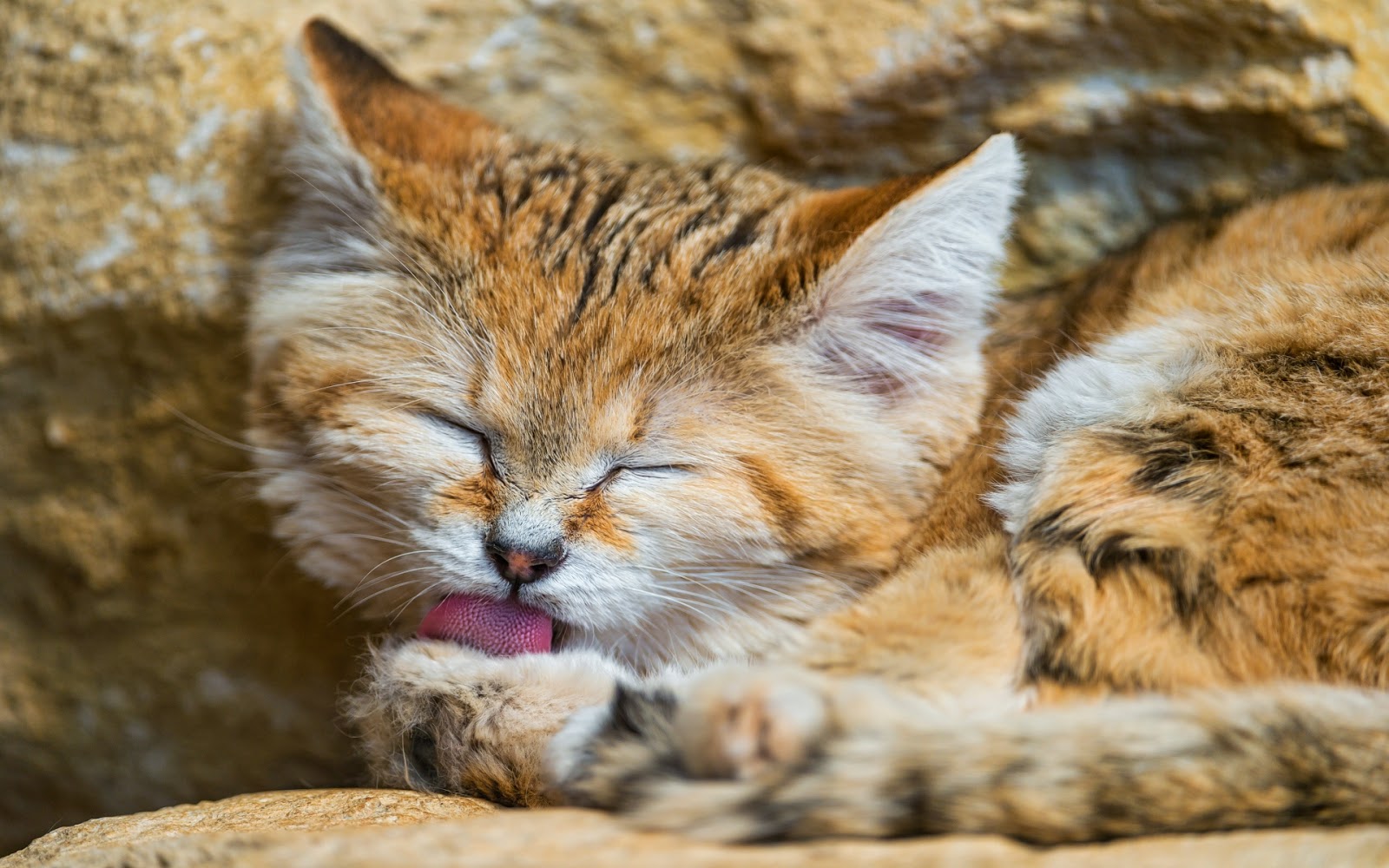Sand Cat (Felis margarita) or dune cat is a cat genus species living in desert areas of Africa and Asia. Sand cats are quite small in size and look stocky with short legs, a long tail and large pointed ears. The length of their head and body in the range 39 to 57 centimeters (15 to 22 in), plus a long tail about 23 to 31 centimeters (9.1 to 12 in). Weight of sand cats in the range of 1.4 to 3.4 kilograms (3.1 to 7.5 lb). The head is very large, and very large ears ears that can be spread vertically horizontal and pointing down even to serve for hunting.
The coat is pale yellow sand cats like the color of sand, dotted the blue and yellow striped hard to see; their chin and belly are white. Usually the stripes of the subspecies live in Africa, the more easily recognizable. Ears and feet are also black stripes, on the run from the red stripes on the outside rim of the eye pads. In winter, the coat can grow up with very thick hair length can be up to 2 inches (5.1 cm). Huge sand cat eyes are yellow and green, and the nose is black.
In contrast to other Asian cats, sand cats have thick hair growing in between the toes, this creates a thick layer of insulating feathers to keep them from burning when walking on sand. After spending quite small nails and blunt, plus thick undercoat covered on foot cushion sand cat footprints that are very hard to identify the enemy.
Sand cats are solitary species - except for the mating season. "House" is their caves dug, usually hang of leaving the fox or badger. The cave of gerbil gerbils and other rodents also be used - but often have more extensive training. Finished product is a relatively straight cave entrance and a length up to 3 meters (9.8 ft). Sand cats hang out at dusk to hunt, target is the rodent, lizards, birds and insects, although their diet may include mostly rodents.
if you love sand cats, you can set as desktop wallpaper, laptop and phone
























Post a Comment